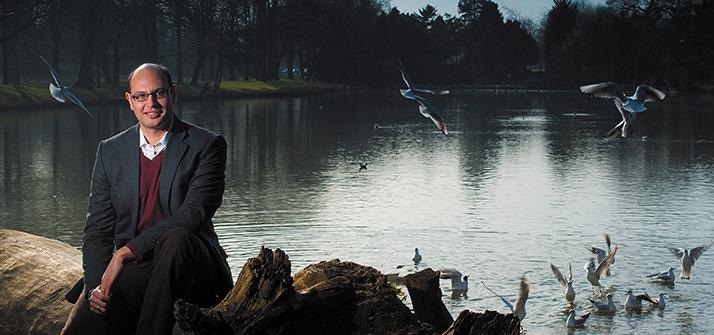According to a world-first study by a professional team of geographers and hydrologists, rivers in southern Africa, South America and Australia are most at risk of extreme ecological variations caused by global warming.
 Professor Simon Gosling, Department of Geography, University of Nottingham (Image Credit: University of Nottingham).
Professor Simon Gosling, Department of Geography, University of Nottingham (Image Credit: University of Nottingham).
The researchers from the University of Nottingham, UCL and the UK Centre for Ecology and Hydrology have innovatively combined a variety of global climate models and hydrological models using an environmental flow technique. The results, reported in Earth’s Future, reveal substantial variation in the risk of change to the ecology of the 321 river basins that cover about 50% of the land surface on Earth.
Aquatic ecosystems support various ecosystem services that are important to humans, such as water supply, food production and water purification. The findings of the researchers could help pinpoint hotspots for ecosystem conservation, through enhanced understanding of the ecological hazards due to climate change-triggered alterations to river flow.
The ecologies of the world's rivers are firmly regulated by the variability amount, and timing of water passing within them. Alterations in river flows affect river depth and velocity, habitats and water chemistry, with repercussions for aquatic life and the ecosystem services offered by rivers to humans.
Making use of the conclusions from nine global hydrological models forced by five climate models, the scientists compared simulated river flows against several global warming circumstances with historical flows. They were able to estimate which basins were more likely to undergo substantial ecosystem change because of altered river flow.
Rivers estimated to be at most risk include the Limpopo and Orange rivers in southern Africa, the Amazon and Parana in South America and Australia’s Darling River.
Around the world, the greater the temperature increase, the bigger the risk of change, mainly for low flows at the maximum level of warming.
Our research is very timely considering the COP discussions taking place in Glasgow this week. We are currently on course for 2.7°C warming compared to pre-industrial times. The Paris Agreement has a goal of 1.5°C, so the world is currently way off target.
Simon Gosling, Professor and Study Lead, School of Geography, University of Nottingham
“Our modelling and analysis show the risks to the ecological functioning of rivers is much larger if the 1.5°C goal is missed and we head towards 3°C. Our study’s results highlight the importance of having ambitious reductions in global greenhouse gas emissions if we are to avoid ecological degradation of some of the world’s largest rivers,” Gosling added.
Professor Simon Gosling led the climate change scenario analysis.
Climate change is expected to lead to an intensification of the hydrological cycle. Yet the climate change signal and its consequences vary throughout the world as revealed by our analysis. In some parts of the world, there is large uncertainty.
Julian Thompson, Professor, Department of Geography, UCL
Thompson continued, “If a river’s regime changes, the associated ecosystem service will change. Natural aquatic ecosystems have processes that can improve water quality — reduced river flow impacts their ability to dilute pollutants. Higher flows might be more associated with changes in sediment loads, which could put water purification under stress.”
The life cycles of aquatic animals, in particular many fish species, are synchronised with seasonal variations in river flow so that changes in discharge could increase pressure on fisheries, many of which are already stressed.
Julian Thompson, Professor, Department of Geography, UCL
The team has started to expand their worldwide analysis to include the effects of human activities such as water diversions and dams. This will allow an acknowledgment of future hazards of ecological change between climate change and human interventions.
The study also stresses the need for moderating action such as modifications to infrastructure, for example, the repurposing of dams to restructure more natural river systems, such as using artificial flood releases to imitate natural flows and preserve downstream environments that depend on rivers for their existence.
Journal Reference:
Thompson, J.R., et al. (2021) Increasing Risk of Ecological Change to Major Rivers of the World With Global Warming. Earth’s Future. doi.org/10.1029/2021EF002048.